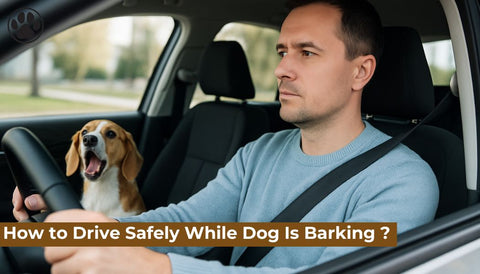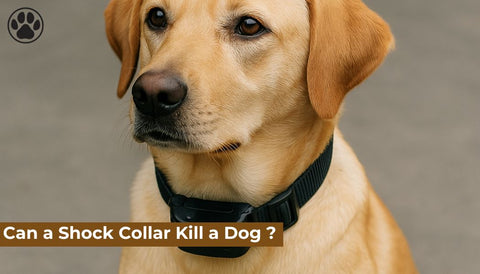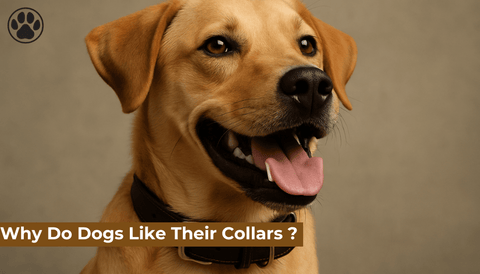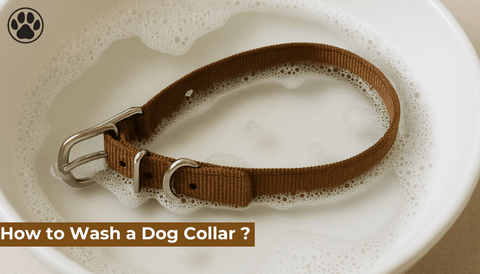
Why Is My Dog’s Eye Red ?
of reading - words
If you’ve noticed your dog’s eye looks red, irritated, or swollen, it’s natural to be concerned. Pet owners often ask, why is my dog’s eye red? While red eyes in dogs can be caused by something as minor as dust or as serious as an infection, identifying the root cause quickly is important to avoid long-term complications.
This guide covers the most common reasons for red eyes in dogs, how to assess symptoms, and when it’s time to consult a veterinarian. Understanding your dog’s eye health helps you act fast and provide the right care.
Is It Normal for Dogs to Have Red Eyes?
Occasional eye redness may occur due to mild irritation or fatigue, especially after exposure to wind, allergens, or debris. However, persistent or sudden redness in one or both eyes should never be ignored. It’s often a symptom of an underlying issue that needs prompt attention.
Dog eye redness is not a condition itself—it’s a symptom that can be caused by anything from allergies to more serious problems like glaucoma or infection.
Common Causes of Red Eyes in Dogs
1. Allergies
Just like humans, dogs can suffer from environmental allergies to pollen, dust, mold, or even certain cleaning products. Red eyes, along with sneezing, watery discharge, and itching, are common signs.
Allergic conjunctivitis can cause redness in both eyes and may appear seasonally or year-round.
2. Dry Eye (Keratoconjunctivitis Sicca)
This condition occurs when a dog’s tear glands don’t produce enough tears, leading to dry, irritated eyes. Common in certain breeds like Cocker Spaniels and Bulldogs, dry eye can cause redness, discharge, and cloudiness.
Untreated dry eye can lead to corneal damage, so early diagnosis is crucial.
3. Conjunctivitis (Pink Eye)
Conjunctivitis refers to inflammation of the conjunctiva—the thin tissue covering the eye and inner eyelids. It can be caused by bacteria, viruses, or irritants.
Symptoms include:
-
Redness
-
Swelling
-
Yellow or green discharge
-
Squinting or rubbing the eyes
This condition is treatable but may require medicated eye drops or ointments from your vet.
4. Injury or Foreign Object
A scratch from a cat, stick, or rough play can damage the eye, leading to redness, swelling, and discharge. Likewise, a foreign object like dust, grass seed, or sand can become trapped under the eyelid.
If your dog is pawing at their eye or holding it closed, it could be due to trauma or debris—and should be checked by a vet immediately.
5. Glaucoma
Glaucoma is a serious condition where pressure builds inside the eye, causing redness, cloudiness, and often pain. This can lead to vision loss or blindness if not treated quickly.
Symptoms may also include:
-
Bulging of the eye
-
Lethargy or irritability
-
Loss of vision
This is a veterinary emergency and requires urgent care.
6. Cherry Eye
Cherry eye is a condition where a dog’s third eyelid gland prolapses, appearing as a red, swollen mass in the corner of the eye. It’s most common in younger dogs and brachycephalic breeds like Bulldogs and Beagles.
While not painful, cherry eye can cause irritation and usually requires surgical correction.
7. Uveitis
This is inflammation of the uvea (middle layer of the eye), often due to infection, trauma, or autoimmune disease. Uveitis is painful and can cause redness, light sensitivity, and squinting.
It’s considered a serious condition and should be evaluated by a veterinarian as soon as possible.
Other Possible Causes
-
Corneal ulcers
-
Eyelid abnormalities (entropion, ectropion)
-
Systemic infections
-
High blood pressure
-
Tumors or growths
Symptoms to Watch For
If your dog’s eye is red, monitor for these signs:
-
Excessive tearing or discharge
-
Swelling around the eye
-
Squinting or keeping the eye closed
-
Rubbing the face or pawing at the eye
-
Changes in vision or coordination
-
Cloudiness or change in eye color
These symptoms can help determine the urgency and guide your next steps.
When to See a Vet
Contact your veterinarian if:
-
Redness lasts more than 24 hours
-
Your dog seems to be in pain
-
There’s significant discharge or swelling
-
The eye looks cloudy or bulging
-
Your dog is rubbing or scratching the eye persistently
Prompt veterinary care can prevent further damage and ensure a full recovery.
Diagnosing Red Eyes in Dogs
A vet will typically perform:
-
A physical exam of the eye
-
Fluorescein staining to check for corneal ulcers
-
Tonometry to measure eye pressure (for glaucoma)
-
Tear production test for dry eye
-
Blood tests if a systemic issue is suspected
Treatment varies depending on the cause but may include:
-
Antibiotic or anti-inflammatory eye drops
-
Oral medications
-
Surgery (in cases like cherry eye or glaucoma)
FAQ
Can I use human eye drops on my dog’s red eye?
No. Many human eye drops contain ingredients that can be harmful to dogs. Only use medications prescribed by a veterinarian.
Is it normal for a dog’s eye to be red after sleep?
Mild redness after waking can be normal, but it should resolve quickly. Persistent or worsening redness should be evaluated.
How can I prevent my dog’s eyes from becoming red?
Keep their face clean, avoid dusty environments, and schedule regular vet checkups. Use dog-safe wipes for eye cleaning if needed.
Can stress cause red eyes in dogs?
Stress alone is unlikely to cause red eyes, but it can worsen symptoms of existing conditions. Always rule out physical causes first.
Should I be worried if only one eye is red?
Redness in one eye may indicate injury, infection, or foreign material. It’s best to have it checked, especially if the dog seems uncomfortable.
Final Thoughts
So, why is my dog’s eye red? It could be something as simple as allergies or as serious as glaucoma. Understanding the potential causes, recognizing symptoms early, and seeking prompt veterinary care are the keys to keeping your dog’s eyes healthy.
Your dog relies on you to protect their vision—so if something looks off, don’t wait. A quick vet visit could prevent discomfort, complications, or even vision loss.




